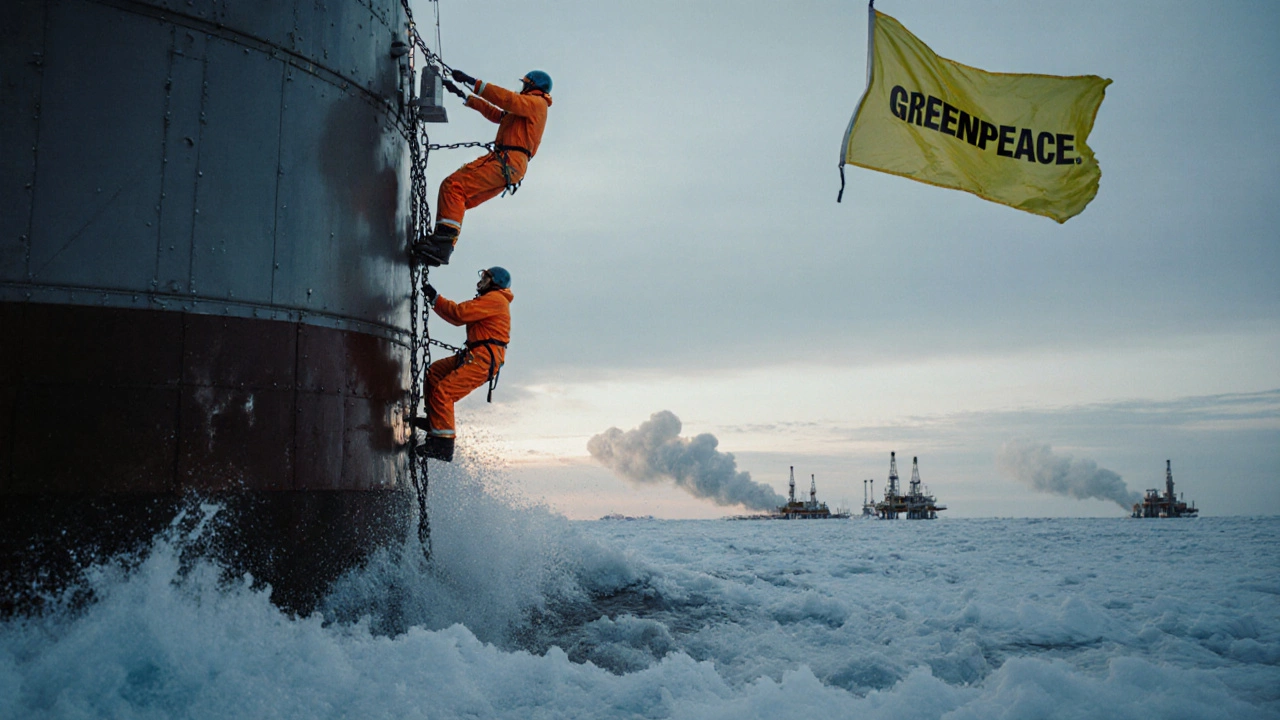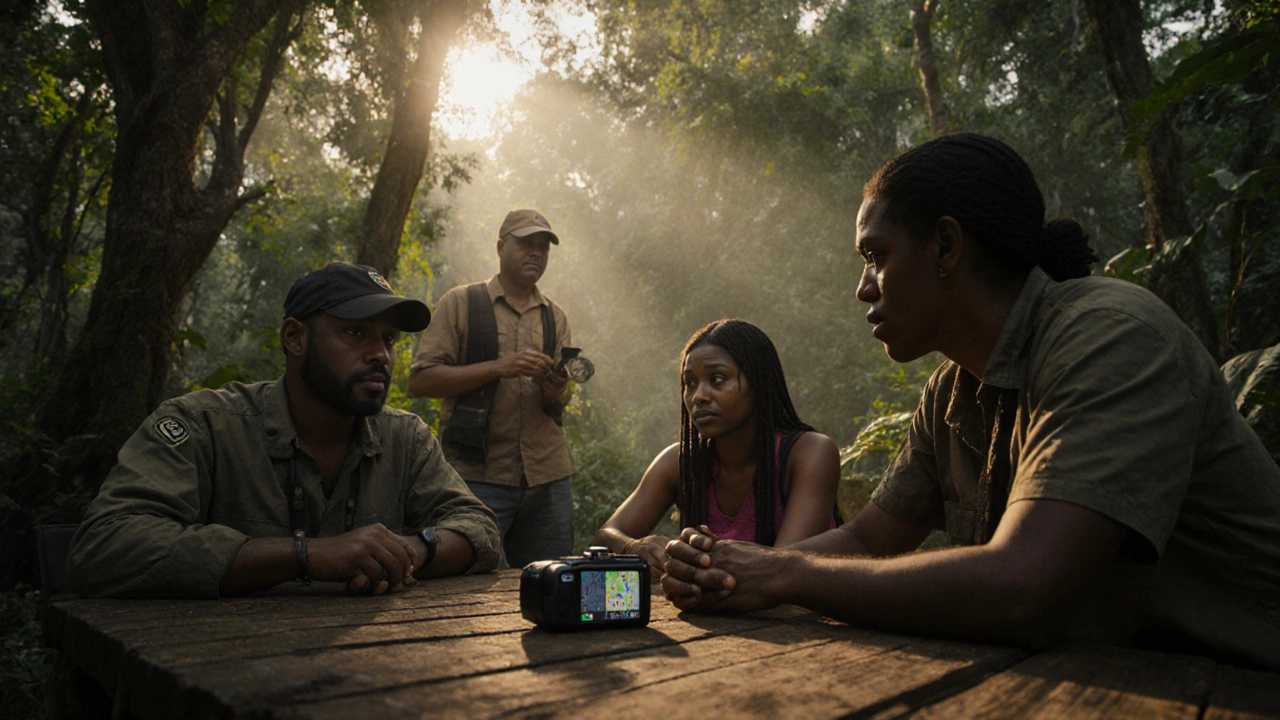When people ask about the biggest environmental organization, they’re usually thinking about size-but size means different things. Is it the most members? The biggest budget? The most countries covered? The most impact? The answer isn’t simple, because no single group checks every box. But if you look at global reach, funding, and public recognition, one name stands out: WWF-the World Wide Fund for Nature.
WWF: The Global Leader in Scale and Reach
WWF operates in over 100 countries, with offices from the Amazon rainforest to the Arctic tundra. It has more than 5 million supporters worldwide and a yearly budget of around $1 billion. That’s more than the next three largest environmental groups combined. Its work isn’t just about protests or petitions-it’s about on-the-ground conservation. WWF helps protect tigers in Nepal, saves sea turtles in Costa Rica, and works with farmers in Kenya to reduce water waste. They partner with governments, corporations, and local communities, not just to raise awareness, but to change systems.
WWF’s structure is built like a network. Each country has its own affiliate, like WWF-India or WWF-Australia, which adapts global goals to local needs. This lets them act fast when a river is being dammed or a forest is being cleared. They’ve helped create over 1,000 protected areas covering more than 250 million hectares. That’s an area larger than the entire European Union.
Greenpeace: The Provocateur with Global Influence
If WWF is the quiet builder, Greenpeace is the loud voice. Founded in 1971, Greenpeace made its name by putting boats in front of whaling ships and climbing oil rigs. They don’t take money from governments or corporations-only from individuals. That independence lets them take bold stances others won’t. Their campaigns against plastic pollution, Arctic drilling, and deforestation make headlines around the world.
Greenpeace has offices in 55 countries and about 3 million supporters. Their budget is roughly $350 million a year-big, but less than half of WWF’s. They don’t run conservation projects like WWF does. Instead, they pressure companies and governments to change. Their power comes from visibility. A single Greenpeace action can shift public opinion overnight. When they blocked a coal port in Australia or chained themselves to a Shell oil rig in the Arctic, those images went viral. That pressure led to real policy changes, like the EU banning single-use plastics or Norway halting new Arctic oil licenses.
Sierra Club: The Grassroots Giant of the U.S.
Founded in 1892 by John Muir, the Sierra Club is the oldest and largest environmental group in the United States. With over 3.8 million members and supporters, it’s bigger than Greenpeace in terms of U.S. reach. But its influence is mostly national. The Sierra Club doesn’t have offices in Africa or Southeast Asia. Instead, it focuses on U.S. policy: fighting coal plants, pushing for clean energy laws, and protecting national parks.
They’ve won major victories-like blocking the Keystone XL pipeline and helping pass the Inflation Reduction Act’s climate provisions. Their strength is in mobilizing local volunteers. In 2024, Sierra Club members showed up at over 2,000 public hearings, wrote 1.5 million letters to lawmakers, and trained 15,000 new activists. They’re not the biggest globally, but in the U.S., they’re unmatched in grassroots power.

Other Major Players
There are other groups that matter just as much in specific areas. The Nature Conservancy, for example, has bought and protected over 125 million acres of land worldwide-more than any other group. They work quietly behind the scenes, buying forests, wetlands, and coral reefs to keep them safe. Unlike WWF or Greenpeace, they rarely protest. They buy land, then manage it.
Conservation International focuses on biodiversity hotspots. They helped create the world’s largest marine protected area in the Pacific. The Rainforest Alliance works with farmers to make agriculture more sustainable. Each of these groups has a niche. None have WWF’s global footprint, but together, they cover the full spectrum of environmental action.
What ‘Biggest’ Really Means
Size doesn’t always mean effectiveness. WWF has the money and reach, but critics say it works too closely with big corporations. Some accuse it of greenwashing-letting companies claim they’re ‘sustainable’ while continuing harmful practices. Greenpeace avoids that trap, but its confrontational style can alienate potential allies. Sierra Club is powerful in the U.S., but it doesn’t operate in places where environmental threats are growing fastest-like Southeast Asia or Sub-Saharan Africa.
The truth is, no single organization can fix the planet. Climate change, deforestation, ocean plastic, species loss-these problems are too big, too complex. They need all kinds of players: the funders, the protesters, the scientists, the lawmakers, the local activists. WWF might be the biggest, but it’s not the only one that matters.

Choosing Where to Support
If you want to help, ask yourself: What kind of change do you want to see?
- If you care about protecting land and wildlife in remote areas, support WWF or The Nature Conservancy.
- If you believe pressure from the public can force corporations to change, back Greenpeace.
- If you’re focused on U.S. policy and want to help pass laws, get involved with the Sierra Club.
- If you want to make farming and food systems better, look into Rainforest Alliance.
Many people donate to more than one. That’s smart. The environmental crisis needs every tool in the toolbox.
Why This Matters Now
In 2025, the world is at a tipping point. The UN says we have less than a decade to avoid the worst effects of climate change. Species are disappearing 1,000 times faster than natural rates. Oceans are acidifying. Forests are burning. The biggest environmental organization isn’t the one with the biggest logo-it’s the one that gets results. And results come from a mix of money, pressure, science, and people showing up.
WWF may be the biggest. But the real power lies in the millions of people who choose to act. Whether you volunteer at a local clean-up, sign a petition, or donate to a group that matches your values-you’re part of the movement that’s bigger than any single organization.
Is WWF the largest environmental organization in the world?
Yes, by most measures-funding, global presence, and number of supporters-WWF (World Wide Fund for Nature) is the largest. It operates in over 100 countries, has a budget of about $1 billion annually, and counts more than 5 million supporters worldwide. Other groups like Greenpeace and the Sierra Club are large too, but none match WWF’s scale.
How does Greenpeace compare to WWF?
Greenpeace is smaller in size and budget-about $350 million a year and 3 million supporters-but more visible. WWF focuses on conservation projects, partnerships, and long-term habitat protection. Greenpeace uses direct action and media campaigns to pressure governments and corporations. WWF works with companies; Greenpeace often confronts them. Both are powerful, but in different ways.
Is the Sierra Club bigger than WWF?
No, not globally. The Sierra Club has over 3.8 million members, mostly in the U.S., making it the largest environmental group in the United States. But WWF has more than 5 million supporters worldwide and operates in over 100 countries. Sierra Club’s influence is strong in U.S. policy, but it doesn’t have the international footprint of WWF.
Which environmental group has the most impact?
Impact depends on the goal. WWF has helped protect millions of hectares of land and endangered species. Greenpeace has stopped oil drilling and pushed for plastic bans. The Nature Conservancy has bought more land than any other group. There’s no single answer-impact comes from different strategies. The most effective approach is having multiple groups working in different ways at the same time.
Should I donate to just one environmental group?
Not necessarily. Different groups do different things. If you care about forests, WWF and The Nature Conservancy are strong choices. If you want corporate accountability, Greenpeace is effective. For U.S. policy change, the Sierra Club leads. Many donors support two or three organizations to cover a broader range of solutions. The problem is too big for any one group to solve alone.
What Comes Next
The environmental movement isn’t about picking a winner. It’s about building a network of action. Even if WWF is the biggest, the real force comes from people who care enough to act-whether that’s by donating, volunteering, or simply speaking up. The next decade will decide whether we protect what’s left of the natural world. And that fight won’t be won by one organization. It’ll be won by millions of small actions, added together.






